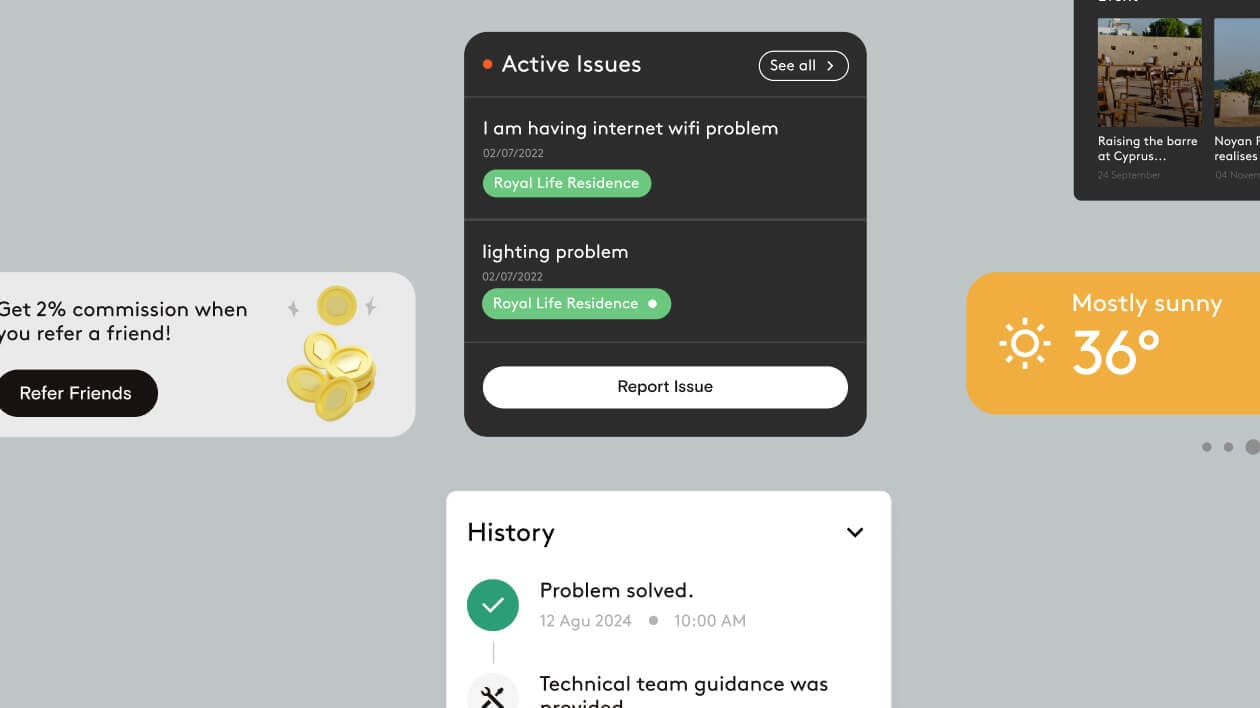Algorithmic Trading
Unlock the power of automated trading strategies. Our expert team designs and implements sophisticated algorithms that analyze market data, identify opportunities, and execute trades with precision and speed. Let us help you navigate the complexities of the financial markets and achieve your investment goals.
Custom Solutions
We understand that every client has unique needs and goals. That's why we take a personalized approach to algorithmic trading, working closely with you to develop custom strategies tailored to your specific requirements. We don't believe in one-size-fits-all solutions, and we're dedicated to crafting algorithms that meet your specific investment objectives.
Data-Driven Insights
Our algorithms are built on a foundation of robust data analysis. We leverage advanced data mining techniques and cutting-edge technologies to extract valuable insights from market data, identify patterns, and inform our trading decisions. We believe that data is the key to unlocking profitable opportunities in the financial markets.
Risk Management First
We prioritize risk management in all our algorithmic trading solutions. Our algorithms are designed with built-in safeguards to protect your investments and mitigate potential losses. We implement robust risk management rules, such as stop-loss orders, position limits, and portfolio diversification strategies, to ensure that your trades are executed responsibly and prudently.
Continuous Optimization
We believe in continuous improvement. We constantly monitor our algorithms' performance, analyze market trends, and make necessary adjustments to optimize their effectiveness. We're committed to staying ahead of the curve in the evolving world of algorithmic trading, ensuring that our solutions remain relevant and profitable.
Design
We craft meaningful digital experiences that captivate and engage, blending creativity with strategy. From concept to execution, we make your brand stand out.
We shape distinctive brands that resonate, ensuring every element reflects your business’s core values.
Our branding process builds emotional connections, making your brand memorable and positioning it for long-term success in the market.
Yes, algorithmic trading can be used for day trading, as it allows for quick and efficient execution of trades based on pre-defined rules and market conditions. However, it's important to note that day trading can be highly volatile and requires careful risk management.
Yes, algorithmic trading can also be used for long-term investing. Strategies like trend following or mean reversion can be applied to identify and capitalize on long-term market trends or price movements.
There are numerous resources available to learn more about algorithmic trading, including online courses, books, and articles. Saypr also offers educational materials and workshops to help you understand the concepts and applications of algorithmic trading.
Saypr offers a comprehensive suite of services to help you leverage the power of algorithmic trading: 1. Strategy Development: Our experts will work with you to define your trading objectives, identify suitable strategies, and develop customized algorithms. 2. Algorithm Implementation: We will implement the algorithms using industry-leading technologies and ensure robust performance and security. 3. Backtesting and Optimization: We will rigorously test the algorithms against historical data and optimize them for optimal performance. 4. Deployment and Monitoring: We will deploy the algorithms on secure and reliable trading platforms and provide ongoing monitoring and support. 5. Risk Management: We will implement robust risk management measures to protect your investments and mitigate potential losses.
Algorithmic trading typically involves several steps: 1. Defining Trading Strategy: This involves identifying the specific market conditions, technical indicators, or other criteria that will trigger a trade. 2. Algorithm Development: A computer program is created to implement the trading strategy, including rules for entering and exiting trades, managing risk, and optimizing execution. 3. Data Analysis: Historical market data is analyzed to test the algorithm's performance and refine the strategy. 4. Backtesting and Optimization: The algorithm is tested against historical data to evaluate its potential profitability and identify areas for improvement. 5. Live Trading: Once the algorithm is deemed effective, it is deployed to execute trades in real-time, following the defined rules and parameters.
Selecting the right strategy depends on your investment objectives, risk tolerance, and market knowledge. It's important to consider: 1. Your Investment Goals: What are your desired returns, time horizon, and risk appetite? 2. Market Expertise: Do you have experience in the specific market or asset class you're targeting? 3. Algorithm Complexity: Are you comfortable with the complexity of the algorithm and its potential risks? 4. Backtesting Results: Have the algorithm's performance been rigorously backtested against historical data? 5. Monitoring and Management: Do you have the resources and expertise to monitor the algorithm's performance and make necessary adjustments?
To get started with algorithmic trading, contact Saypr for a consultation. We will discuss your investment goals, risk tolerance, and technical expertise to recommend a suitable strategy and provide a personalized solution.
The development and implementation timeline for an algorithmic trading strategy can vary depending on its complexity and the level of customization required. We strive to deliver solutions efficiently and effectively while ensuring high quality and performance.
Algorithmic trading platforms are designed with robust security measures to protect your investments. These measures include encryption, firewalls, and multi-factor authentication. However, it's important to choose a reputable provider with a proven track record of security and compliance.
Algorithmic trading is not suitable for all investors. It requires a certain level of technical understanding and comfort with risk. If you're not familiar with the concepts of programming, algorithms, and market data analysis, it's best to consult with a financial advisor or a qualified algorithmic trading expert.
Algorithmic trading offers several advantages: 1. Speed and Efficiency: Algorithms can analyze market data and execute trades much faster than humans, enabling quick responses to market opportunities. 2. Reduced Emotional Bias: By eliminating human emotions from the trading process, algorithmic trading can help avoid impulsive decisions and stick to a pre-defined strategy. 3. Increased Accuracy: Algorithms can follow pre-defined rules consistently, reducing the risk of errors or misinterpretations. 4. Scalability: Algorithmic trading can handle large volumes of trades and complex strategies, allowing for efficient management of a diverse portfolio. 5. Risk Management: Algorithms can incorporate risk management rules, such as stop-loss orders, to limit potential losses.
There are numerous algorithmic trading strategies, each with its own approach and objectives. Some common types include: 1. Trend Following: These strategies identify and capitalize on trends in market prices. 2. Mean Reversion: These strategies aim to profit from price movements that revert to historical averages. 3. Arbitrage: These strategies exploit price discrepancies between different markets or assets. 4. High-Frequency Trading (HFT): These strategies involve executing trades at extremely high speeds, taking advantage of small price fluctuations. 5. Market Making: These strategies provide liquidity to the market by buying and selling assets at specific prices.
The future of algorithmic trading is likely to be driven by advancements in artificial intelligence, machine learning, and big data analytics. These technologies will enable more sophisticated algorithms, personalized trading strategies, and potentially even more efficient markets.
Algorithmic trading is subject to various regulations, including those related to market manipulation, insider trading, and cybersecurity. We ensure compliance with all relevant regulations and provide guidance on legal and regulatory matters.
While algorithmic trading offers benefits, it also comes with potential risks: 1. Algorithm Errors: Programming errors or glitches can lead to unexpected trades or losses. 2. Market Volatility: Algorithmic trading strategies can be affected by sudden market fluctuations, which may not be anticipated by the algorithm. 3. Counterparty Risk: Trading algorithms rely on third-party platforms and systems, which can be vulnerable to outages or security breaches. 4. Regulatory Changes: Changes in regulations or market rules can impact the effectiveness of algorithms and require adjustments. 5. Lack of Transparency: Some algorithmic trading strategies can be complex and difficult to understand, making it challenging to assess their performance or risks.
Algorithmic trading is a method of executing trades using pre-programmed instructions. These instructions are based on specific market conditions, technical indicators, or other criteria. By automating the trading process, algorithmic trading aims to improve efficiency, reduce emotional bias, and potentially enhance returns. It involves developing and deploying algorithms that analyze market data, identify trading opportunities, and execute trades automatically.
The cost of algorithmic trading services can vary depending on the complexity of the strategy, the scope of the project, and the level of customization required. We offer flexible pricing models to meet your specific needs. Contact us for a personalized quote.
High-frequency trading (HFT) is a subset of algorithmic trading that involves executing trades at extremely high speeds, often taking advantage of small price fluctuations. While HFT algorithms are highly complex and sophisticated, they are not the only type of algorithmic trading strategy.
There is no minimum investment requirement for algorithmic trading. Our services are available to individual investors, hedge funds, and institutional clients with varying portfolio sizes. We can tailor our solutions to your specific investment needs and resources.
Artificial intelligence (AI) is increasingly being used in algorithmic trading to enhance performance and decision-making. AI algorithms can analyze vast amounts of data, identify complex patterns, and adapt to changing market conditions more effectively than traditional algorithms.

















